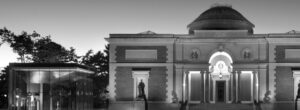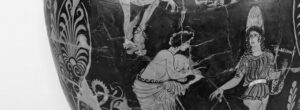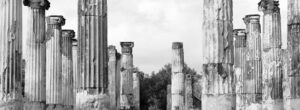The conclusion of the War of 1812 marked a dramatic shift in the America’s relationship with Europe. America emerged newly confident and secure in its hitherto tenuous existence. Between 1815 and the start of the Civil War in 1861, Americans travelled to Europe and the Mediterranean in steadily higher numbers, for increasingly diverse reasons, and with an ever-greater sense of adventure. American diplomacy was extended beyond the core European courts to increasingly remote places throughout the Mediterranean, and the establishment of Christian missions brought American ministers, doctors, and laypeople to the eastern Mediterranean and beyond. By the middle of the nineteenth century, European travel and the experience of ancient ruins and antiquity, particularly in Italy, was so commonplace that Nathaniel Hawthorne could remark:
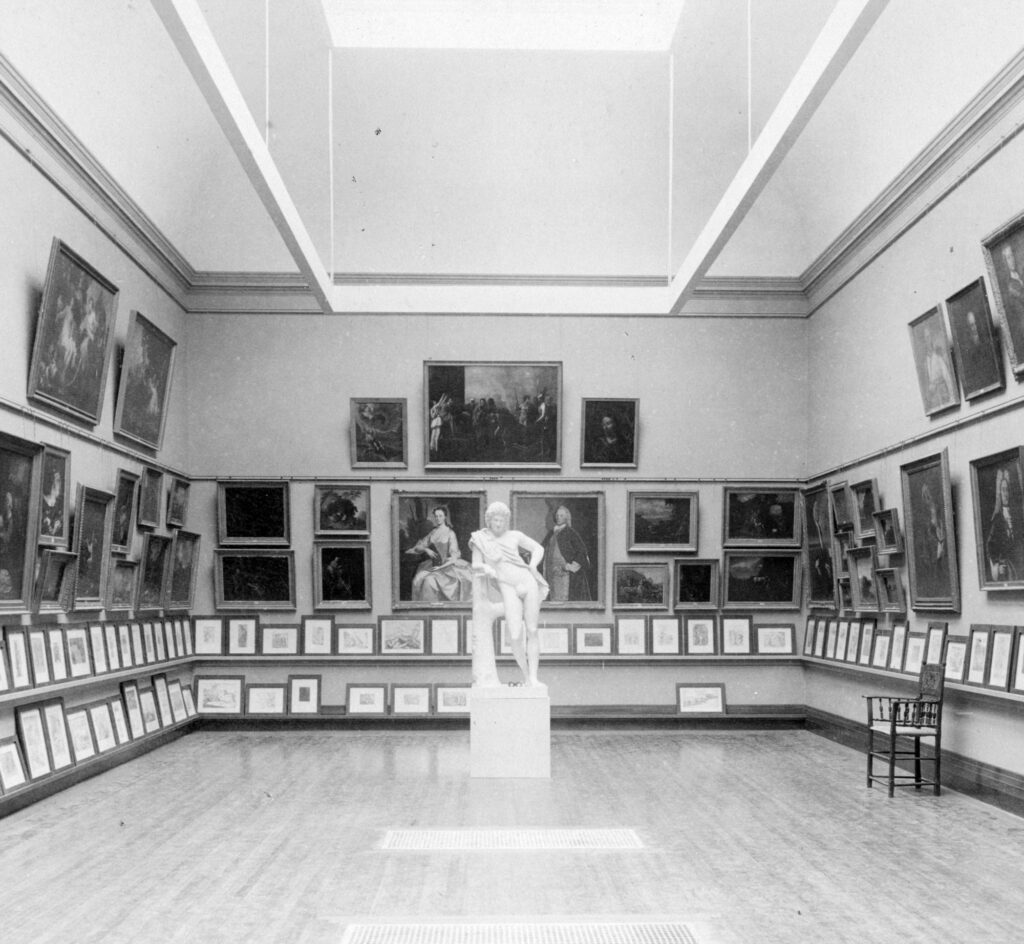
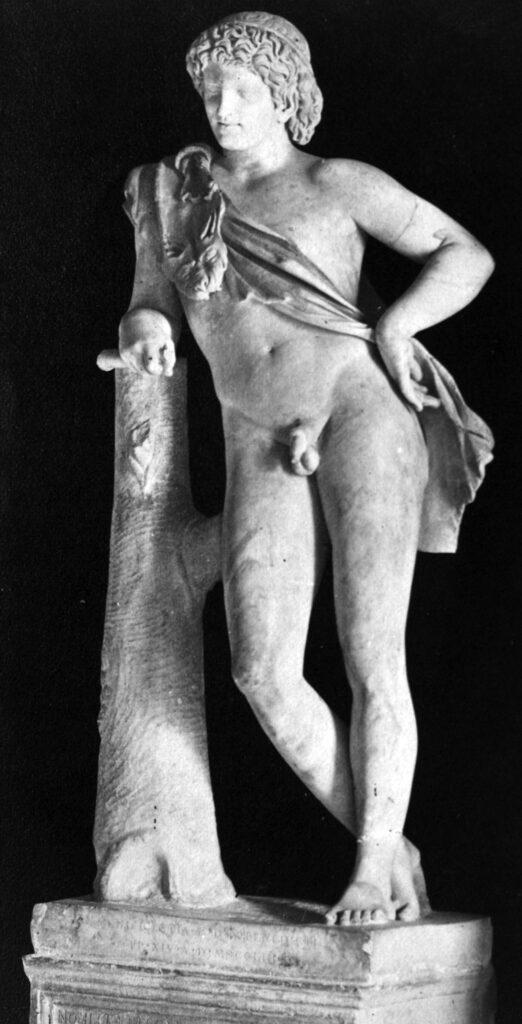
America on the World Stage
“Everybody, now-adays, has been in Rome.”
If the War of 1812 ushered in a new era of international relations and the American experience abroad, the cultural landscape changed much more gradually at home. The impact of classicism and ancient Mediterranean culture on education, popular culture, and the arts continued to grow and the classical vogue continued to pervade all realms of American life. The classical education that was the bedrock of colonial and early America remained in place, Americans continued to advocate for the ancient Greeks and Romans as a model for American political life and culture, and classical tastes continued to influence writing and manners. Henry Adams wrote in his autobiography of his own experience of the antebellum American curriculum that “the American boy of 1854 stood nearer the year 1 than to the year 1900.”
Most importantly, acknowledgement of the role the arts played in promoting a national identity, previously confined to like-minded elites like James Bowdoin III (1752–1811) and Thomas Jefferson, grew more widespread over the course of the first half of the nineteenth century. The first American institutions devoted to the promotion of the arts—from art institutes to galleries—were founded during this period, as were cultural institutions around collections including museums, athenaeums, and libraries. Considered the nation’s first museum devoted to the fine arts, the Wadsworth Athenaeum opened its doors in 1844. Still, ever more artists flocked to Europe and especially Italy to study from ancient ruins and antique sculpture, translating their learning into dramatic landscapes and sculptures that relate the lessons of the ancient world to America’s present and future.
These travelers were well prepared to plunge into the ancient art and ruins they encountered; through a combination of classical education, encounters with translated European art historical treatises, and engravings, copies, and casts that had begun to make their way to America, the ancient Mediterranean was already well embedded in the American imagination. The first American travelogues began to appear during this period and quickly became best sellers at home, like Neoclassicist painter Rembrandt Peale’s (1778–1860) Notes on Italy (1831) or Maine-born George Stillman Hillard’s (1808–1879) Six Months in Italy (1853), which became the favorite travel guide for Americans in the decade before the Civil War.
Popular guidebooks, along with the baggage of an education grounded Greek and Latin classical literatures, provided American travelers of this era with specific expectations. By combining their classical education with the sights in front of them, Americans read themselves into Mediterranean ruins—and to extract moral lessons. Describing the view from the Capitoline over the Forum, Hillard explicitly connected the taking in of the scene with his classical schooling:
From [the Capitoline tower], a scene of varied and magnificent beauty unfolds itself to the eye, in which the natural features, grand and striking as they are, are lost in that magic charm of association, which gives a richer verdure to the plain, a deeper purple to the hill, a finer blue to the sky, and bathes every roof in spiritual light. The history and literature of Rome are lying at our feet, and the living landscape is a page, on which is written one half of all that we have learned at school and at college.
To many visitors, it felt as if they were walking in company with ancient ghosts, a sentiment conjured up by Nathanial Hawthorne’s (1804–1864, Bowdoin Class of 1825) in his gothic romance story The Marble Faun (1860) wherein he describes friends as they walk the Via Sacra and envision a triumph passing with them.
Indeed, The Marble Faun is a testament to the allure of Rome for American travelers in the middle of the nineteenth century. Published at the end of an era and on the eve of the Civil War, the novel is perhaps the best witness to the friendships formed among expatriate American artists and authors in Rome in the nineteenth century. Although a fictional tale, it recounts with great realism and detail—founded on Hawthorne’s own experiences—the visits of three young American artists and their Italian friend to the sculpture galleries of Rome and ancient sites like the Roman forum and catacombs, as well as the friendships formed among expatriate artists. Lengthy descriptions of Rome’s ancient aspects, from ruins and monuments to sculptures and catacombs, feature throughout the book and turned the fictional tale into a trusted guidebook. Many travelers purchased special volumes of the story that allowed them to curate their own selection of illustrations from photographs of familiar sites and sculptures.
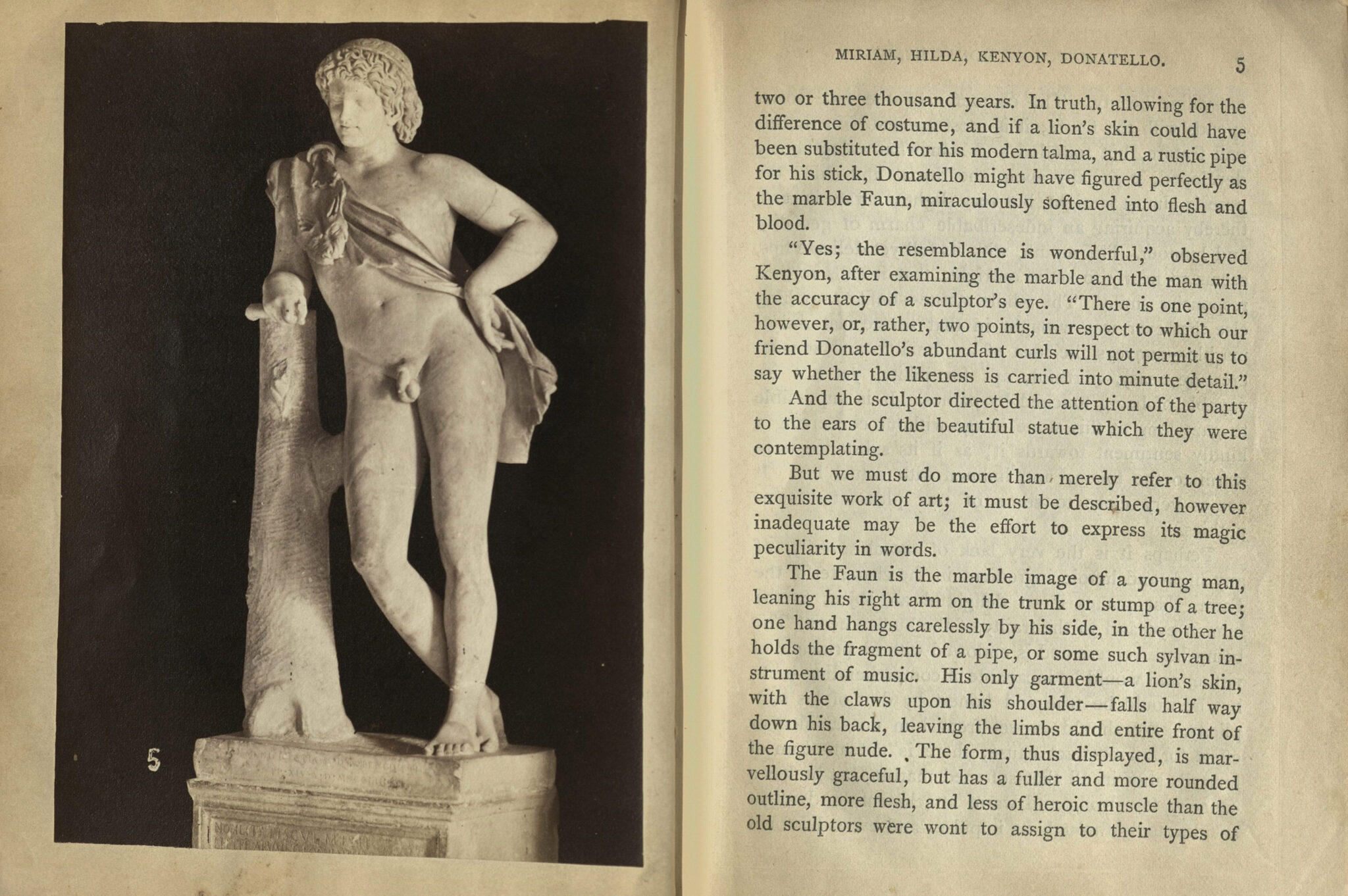
Nathaniel Hawthorne, The Marble Faun: or, the Romance of Monte Beni, 1860, Originally published Boston, Ticknor, and Fields, 1860; Published in Europe as Transformations by Tauchnitz (Leipzig, 1860) and Smith, Elder, & Co. (1872). McGuigan Collection, 0000.2022.6.15.
View object recordHawthorne’s novel was named after a famed ancient sculpture in the Capitoline Museum in Rome, a marble sculpture of a youthful satyr known as the “Marble Faun” or “Resting Satyr.” The Capitoline sculpture is the best known among over one hundred surviving ancient statues of the type, originally a Greek ideal sculpture by the famed fourth-century BCE sculptor Praxiteles. In the novel, Hawthorne’s protagonists encounter the sculpture in the first chapter during a visit to the Capitoline Museums. Both the novel and the sculpture remained popular on Bowdoin’s campus for decades after its publication in 1860. A plaster cast of the sculpture, likely added to the growing cast collection in recognition of Hawthorne’s literary achievement, was prominently installed on its own in the center of the Bowdoin Gallery in the late nineteenth century, where it was surrounded by paintings by gifts from James Bowdoin III, including the Continence of Scipio and Venus and Adonis, and from George William Boyd (1791–1860), Class of 1810. The entry for the Marble Faun cast in the guide to the collection was accompanied by a quote from the first chapter of Hawthorne’s novel, in which the statue is first encountered and described:
The whole statue—unlike anything else that ever was wrought in that severe material of marble—conveys the idea of an amiable and sensual creature, easy, mirthful, apt for jollity, yet not incapable of being touched by pathos. It is impossible to gaze long at this stone image without conceiving a kindly sentiment towards it, as if its substance were warm to the touch, and imbued with actual life. It comes very close to some of our pleasantest sympathies.
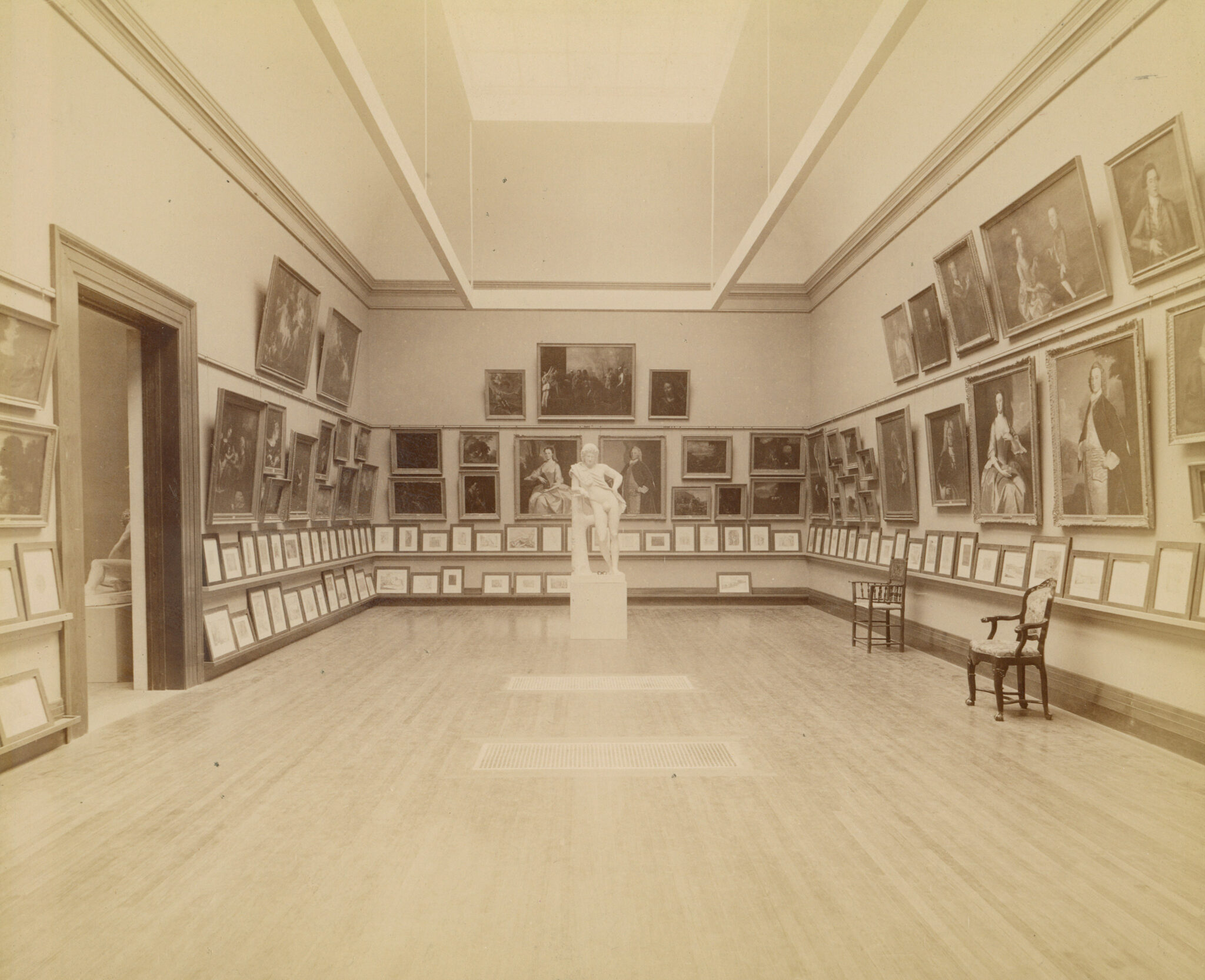
View of a portrait gallery in the art museum, ca. 1894. Photograph by G. B. Webber. Courtesy of the George J. Mitchell Department of Special Collections & Archives, Bowdoin College Library, Brunswick, Maine, Local Call Number 8442.
Authentic antiquities remained few and far between in American throughout the first half of the nineteenth century. Despite an increase in American tourism, few American travelers seem to have taken advantage of the opportunity to purchase ancient art and artifacts. Bostonian Charles C. Perkins (1823–1886) seems to have been an outlier when, while visiting friend and American sculptor Thomas Crawford (1814–1857) in Rome, he gathered together several dozen architectural fragments that were later donated to the Museum of Fine Arts in Boston. Certainly, later generations of Americans found the temptation of acquiring antiquities much harder to resist.
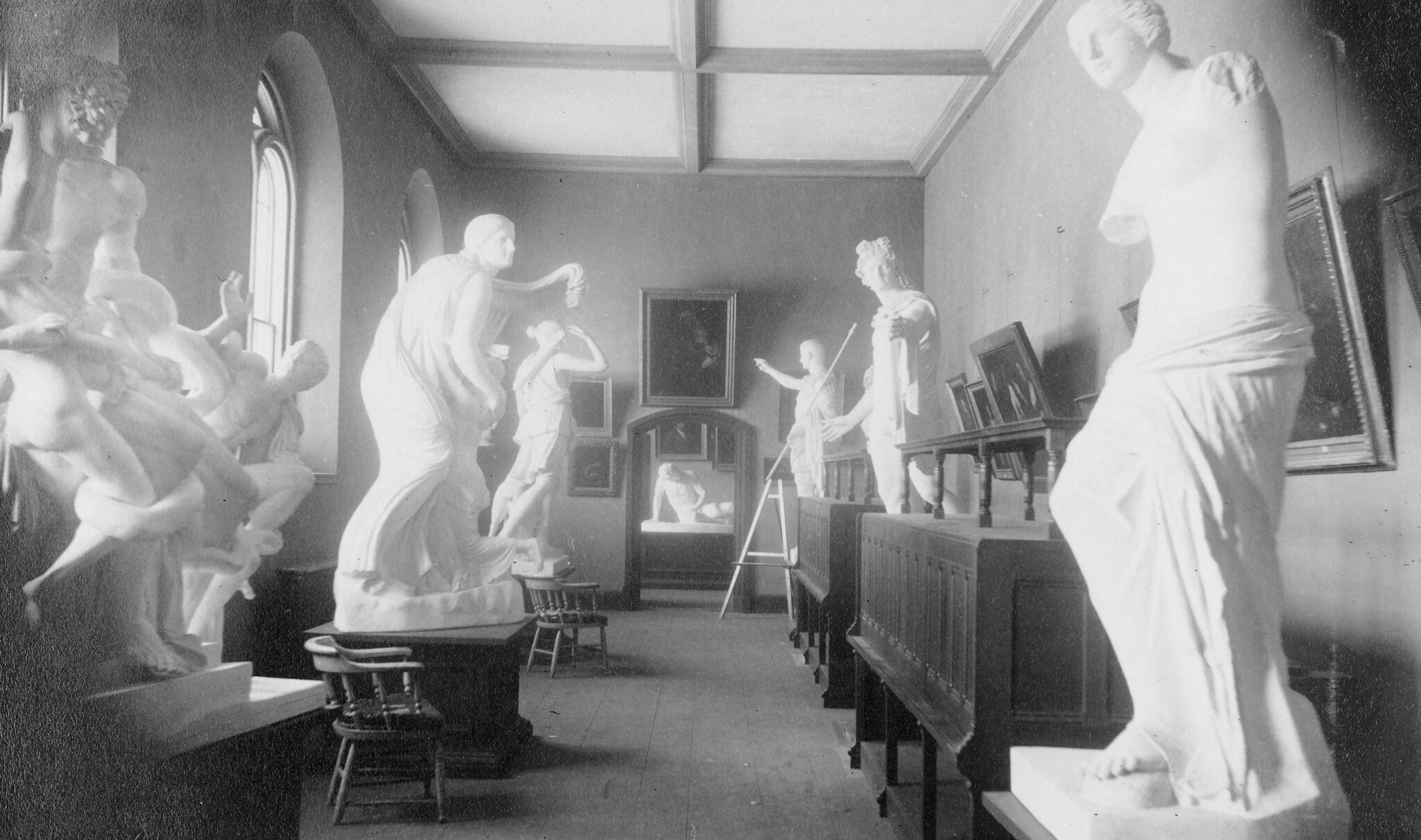
Interior view of the Picture/Sculpture Gallery in the Chapel, ca. 1870-1894. Photograph by A.O. Reed. Courtesy of the George J. Mitchell Department of Special Collections & Archives, Bowdoin College Library, Brunswick, Maine, Local Call Number 1347.
Given the paucity of authentic antiquities in America though, plaster casts continued to play an important role. Like many colleges and museums, Bowdoin had a sizeable collection of casts by the end of the nineteenth century. Catalogues from the period indicate a collection of over two dozen casts, including the Laocoön, the Venus De Milo, the Apollo Belvedere, and, appropriately, the Marble Faun. It is not known when the first casts arrived at Bowdoin (the first documented casts appear in the President’s Reports of 1882), but photographs of the Walker galleries in the Bowdoin Chapel, where the art collections were installed from 1855 to 1893, show the prominent place given to these casts throughout the galleries in the early years of the college.
The few antiquities that did arrive on American shores came almost entirely through the haphazard acquisitions of American military men and missionaries, as America took its first tentative steps on the world stage. In 1801, the United States Navy formed a special deployment known as the Mediterranean Squadron in response to piracy throughout the Mediterranean. In operation until 1865, the squadron’s naval officers were responsible for more than a few opportunistic acquisitions of antiquities in the eastern Mediterranean. For example, in 1834 Matthew Calbraith Perry (who would later gain fame for his role opening Japan to trade with Europe and the United States) brought back from his deployment a second century CE Roman portrait head from Asia Minor, and Captain Jesse Duncan Elliot acquired a pair of marble garlanded sarcophagi from Beirut, intending to offer one to President Jackson for his burial.
Regarding Egyptian antiquities, the artist Benjamin West sent a mummified hand and arm to Philadelphia in 1767—believed to be the first Egyptian remains to enter the country—and a small number of Egyptian remains were sent to America in the following decades. Padihersef, the first complete Egyptian mummy with a wooden sarcophagus arrived in America in 1823 as a gift of a Dutch merchant to the newly established Massachusetts General Hospital. On arrival, the mummy toured the country in a special exhibition for several years. Encountering the exhibition prompted John Russwurm, Bowdoin’s first Black graduate (Class of 1826) and editor of Freedom’s Journal, to reflect on the connections between past and present and on the overlooked role of Egypt and Africa in contemporary accounts of antiquity. The Greeks, he mused “received their first lessons from Africans.” He went on to observe that “The Egyptians being enlightened and learned, diffused knowledge among the Greeks, who afterwards civilized the Romans, and the Romans extending civilization with their arms, civilized the world.”
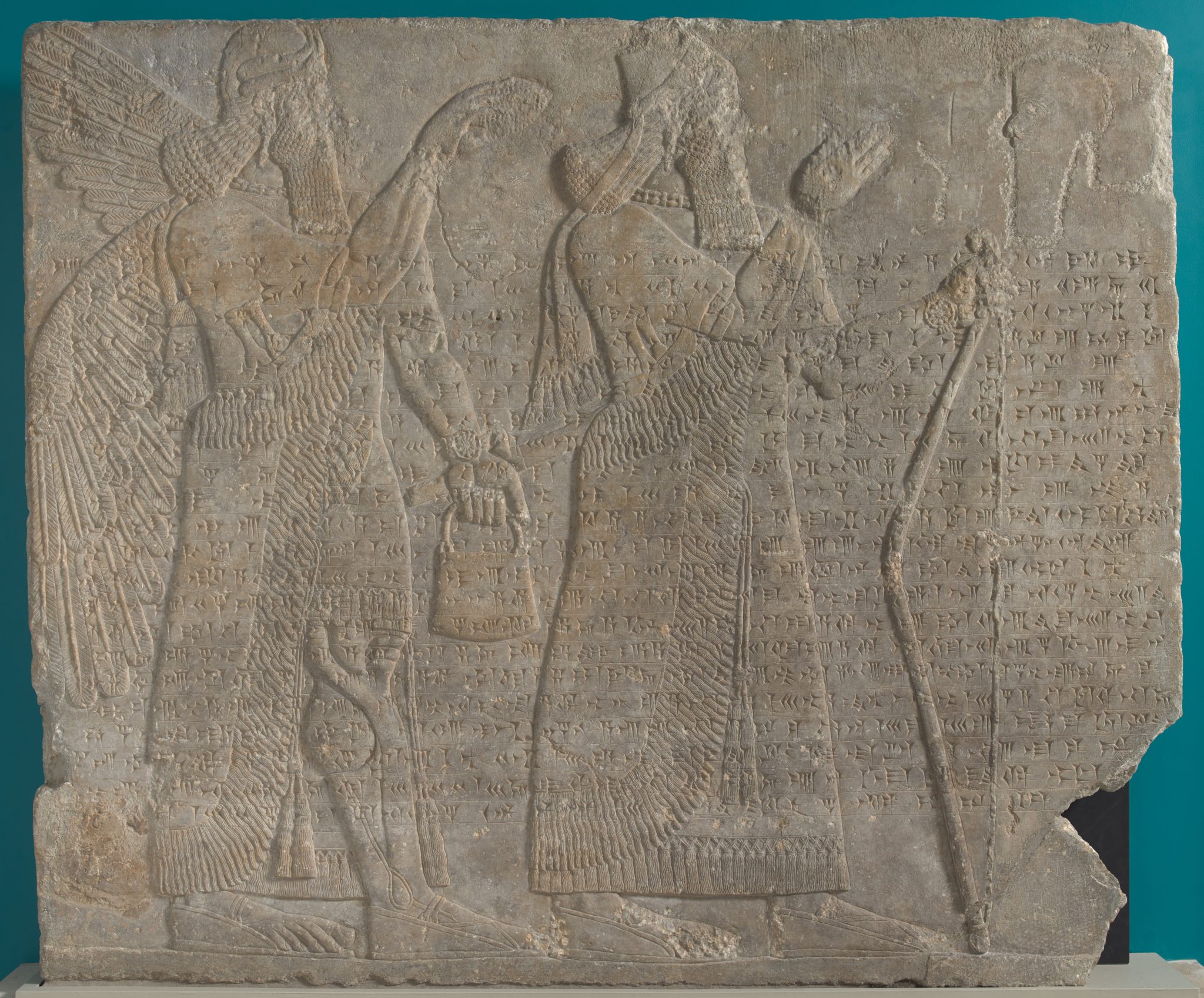
Relief panel with apkallu (winged spirit) anointing King Ashurnasirpal II, Mesopotamian, Nimrud (ancient Kalhu), Iraq, ca. 883–859 BCE, gypsum alabaster. Gift of Dr. Henri Byron Haskell, Medical School Class of 1855, 1860.3.
View object recordIt was only at the very close of the era, on the eve of the Civil War, that Bowdoin received its first ancient artifacts: five Assyrian slabs, arriving at the College in 1860 courtesy of Bowdoin’s own Henri Byron Haskell (1781–1864, class of 1855). Haskell took up missionary work in Mosul, then part of the Ottoman Empire. There he was well positioned to frequent the recently uncovered archaeological site of Nimrud, where an ancient Neo-Assyrian palace complex had recently been uncovered. Haskell’s letters to the Professor Parker Cleaveland, housed in Bowdoin’s archives, document his enthusiasm on encountering these reliefs and pursuing a major gift for his alma mater including one July 3, 1857. “I have just returned from Mosul, Assyria where I have some very fine slabs from Nineveh [sic], which I shall be pleased to present to Bowdoin College my Medical School alma mater,” Haskell wrote.
Nimrud was rediscovered in 1845 by Sir Austen Henry Layard, an English explorer, diplomat, and archaeologist who conducted the first excavations at the site from 1845 to 1851. His finds at Nimrud were widely publicized, and his lavishly illustrated accounts of his excavations became best-sellers among the general public. Layard and his successors sent many of the best finds, including the reliefs, to the British Museum, while others found their way to the Louvre and other European museums and private collectors.
In the 1850s, a time when American missionary activity in Iraq was increasing, the first reliefs were sent to American shores, including the five gifted by Haskell. On arrival, the five monumental relief slabs were placed in the entrance to the College’s chapel, where they set a prominent precedent for the appreciation of ancient art. Over decades, their placement has changed several times. When the Walker Art Building was completed in 1894, the reliefs were placed off view in the basement; it is likely that their value as works of art was not appreciated, and they were considered out of place in a building that traced art history through Greece and Rome into the Renaissance. It was not until the directorship of Philip C. Beam in the late 1930s that the reliefs were brought out of the basement and prominently installed on the walls of the Museum’s rotunda gallery. However, because of the placement of other works of art as well as the visitor services station and gift shop, this proved a less-than-ideal location for viewing the reliefs. When the Walker Art Building underwent renovation and reopened in 2007, the reliefs were installed in a purpose-built gallery at the Museum’s rear, with a glass façade opening onto the main street of the Town of Brunswick.
The dispersal of the reliefs and other artifacts from Nimrud has had repercussions that resonate today. Many of the relief panels relate directly to their neighbors, and the removal of hundreds of panels from the site left significant gaps in the physical and historical record. Research continues today on reconstructing the relationships between the panels and recreating the decorative program of the palace. In 2015, new gaps were created when the reliefs that remained at the site of Nimrud in Iraq were targeted by ISIS militants, who took pickaxes, jackhammers, and dynamite to the remains, devastating the site.
Though Byron Henri Haskell was responsible for the arrival of the first antiquities at Bowdoin, he cannot be considered a “collector” as there is no evidence to suggest that he continued to acquire works of art following the reliefs. Among the earliest collectors and donors to the College was George William Boyd, Class of 1810. A native of Portsmouth, New Hampshire, Boyd came from a well-to-do New England family. As a student at Bowdoin and throughout his life, Boyd cultivated a passion for the arts, including fine art, architecture, and literature. He spent three decades as an auctioneer in New Orleans, where the auction house he oversaw with his father, William Boyd & Son, sold, among other things, enslaved individuals. Boyd is not alone among early donors to Bowdoin whose wealth was partly or even largely derived from slavery.
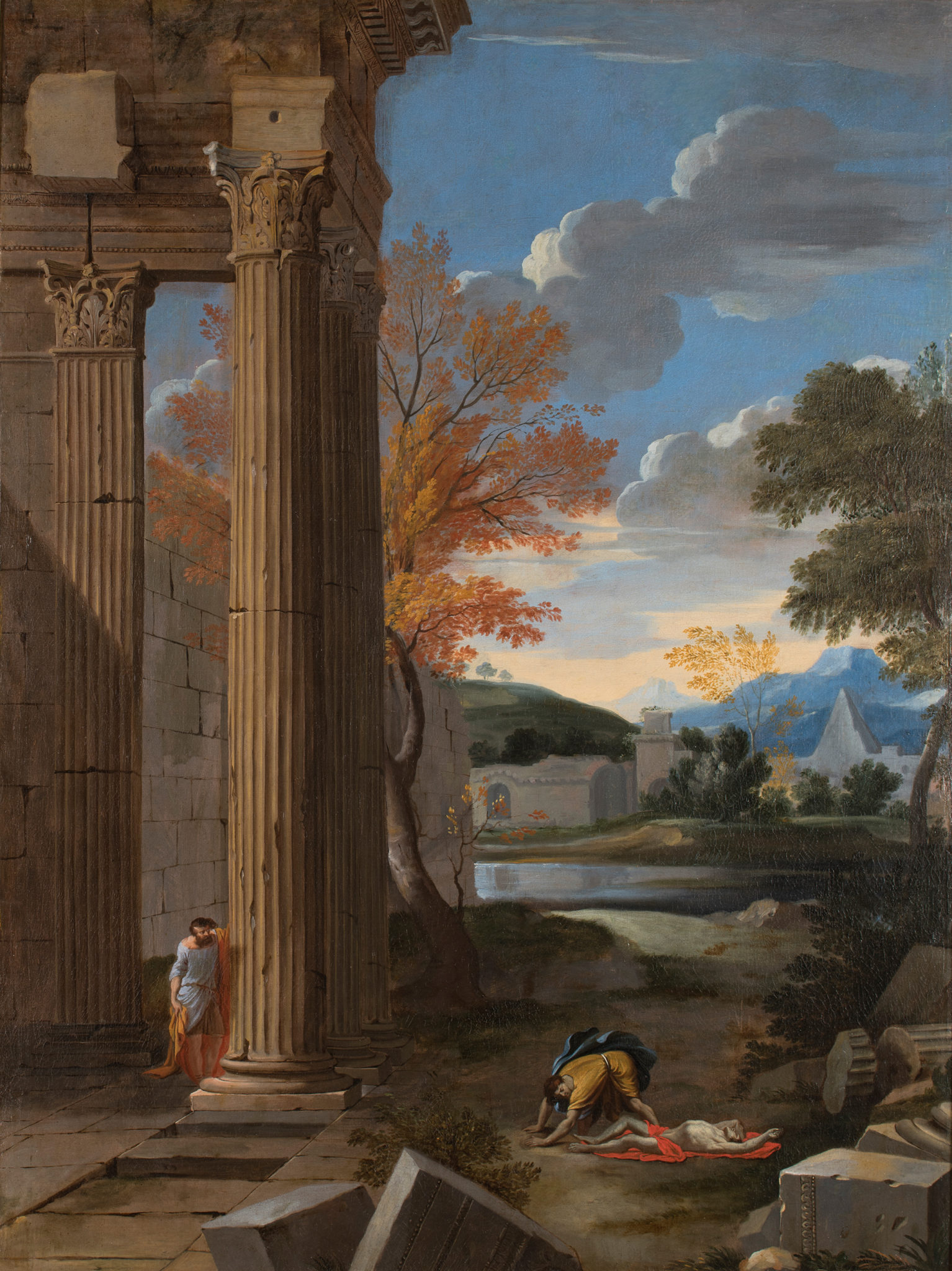
Unknown Artist, French, Landscape with Lofty Architectural Ruins, late 17th c. CE, oil on canvas. Bowdoin College Museum of Art, Gift of Colonel George W. Boyd, Class of 1810, 1852.17.
In 1837, Boyd retired to New Jersey and there designed a mansion with many classically derived architectural elements. He filled this home with artworks, among them European paintings of classical imagery and ancient ruins, including a pair of large French paintings of the late seventeenth century that have been restored for Antiquity & America . The paintings feature real and imagined ancient ruins in the landscape of Rome, and are peopled by figures in ancient dress. His probate inventory also indicates that he enjoyed a table service of fine porcelain in the Etruscan pattern. In 1852, Boyd donated his collection of twenty-two paintings to Bowdoin College, marking the largest gift of artworks since the bequest of James Bowdoin III in 1811. Upon his death in 1860, Boyd left the college the largest financial bequest in its history. Today, together with the names of Bowdoin and Walker, Boyd’s name is given to one of the largest galleries in the Museum and, fittingly, one of the galleries of Antiquities & America.

Elkin, Knight & Bridgwood, The Foley Potteries, Plate, ca. 1827-1840, transfer-printed earthenware. Bowdoin College Museum of Art, Gift of Laura F. Sprague in honor of Sean Burrus, 2021.59.
View object recordAmerican Art
The first half of the nineteenth century saw robust colonies of American expatriate artists form in major cities across Europe, especially Paris, Rome, and Florence. Artists continued to find in Europe, and especially Italy, the freedom and liberty to pursue their arts without moral judgement. In the words of the sculptor Kenyon in Hawthorne’s Marble Faun:
Rome is not like one of our New England villages, where we need the permission of each individual neighbor for every act that we do, every word that we utter, and every friend that we make or keep. In these particulars the Papal despotism allows us for your breath than our native air…
Europe’s influence on these artists subsequently created a profound impact on American arts and culture. Images of the ancient world abound in American art of the nineteenth century, when American artists and patrons creatively used antiquity in everything from paintings to prints, portraiture to porcelain. William Dunlap (1766–1839), one of the first to treat American art history as a subject worthy of study in the three-volume History of the Rise and Progress of the Arts of Design in the United States (1834), espoused the view that:
[H]appily the architecture and sculpture of Greece have come down to us, for we have no standard of beauty, but that which is derived from the country of Homer and Phidias. The sculptors and architects of Greece are our teachers to this day in form; and he most excels who most assiduously studies the models they have left us.
Though neoclassicism was in transition in Europe in this period, with the deaths of many of the movement’s earliest leading figures, the studios of artists such as Bertel Thorvaldsen (1770–1844) and Jean Auguste Dominique Ingres (1780–1867) kept the tradition alive. Exposure to neoclassicism and Roman ruins and antique statues thus continued to profoundly shape the output of American artists who studied in Europe in the first half of the nineteenth century. For example, the classicizing mode of American portraiture remained in favor for both American icons as well as for local luminaries.
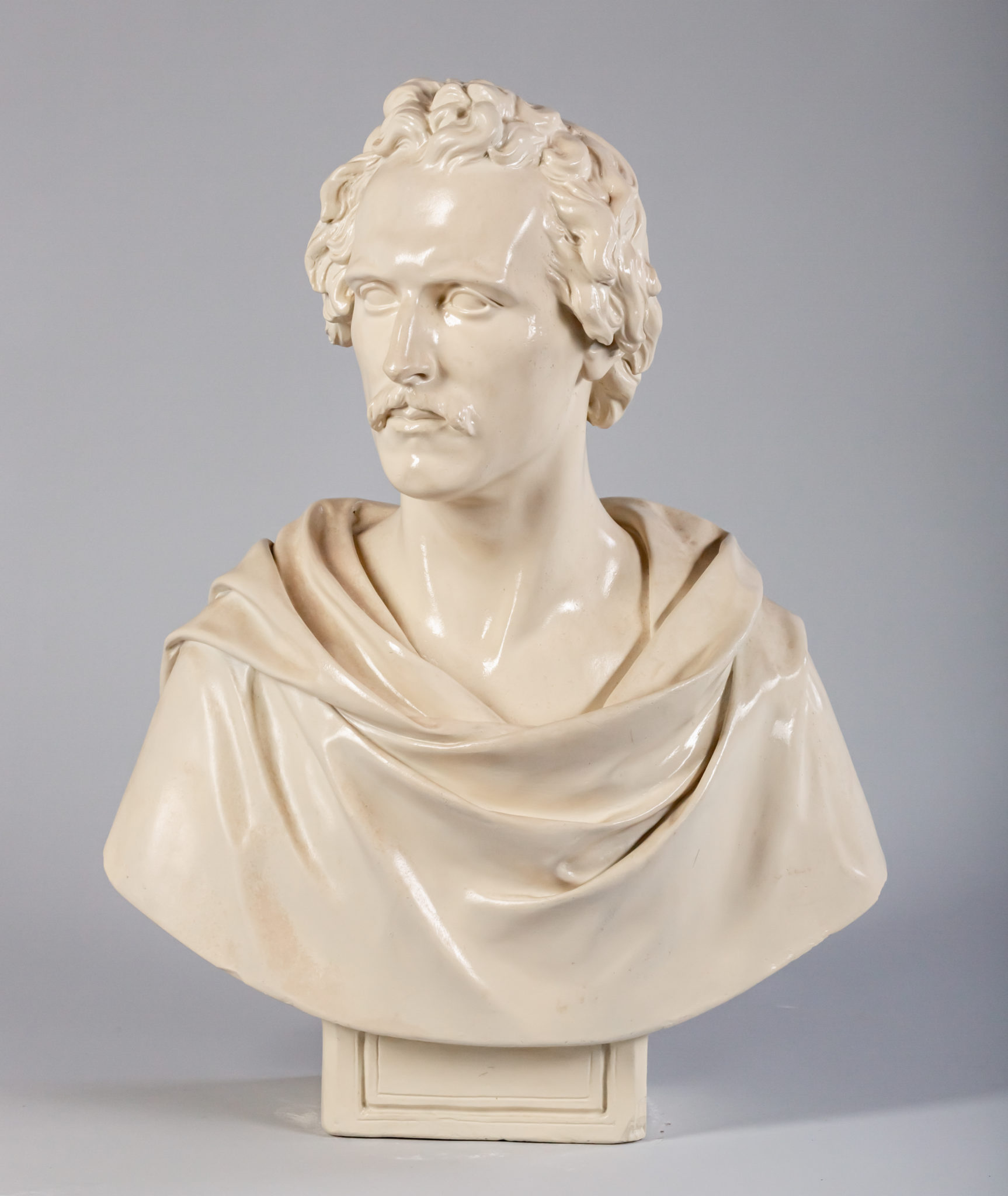
Thomas Crawford, Bust of Professor George W. Greene, 1840, glazed ceramic, painted white. Bowdoin College Museum of Art, Gift of Henry Wadsworth Longfellow, Class of 1825, 1879.1.
View object recordThomas Crawford (1814–1857), who settled in Rome permanently in 1835, was the first American sculptor to take up residence in the city. He regularly haunted the Vatican sculpture galleries, which—then and now—hold one of the largest and finest collections of ancient Greek and Roman sculpture in the world. Crawford spent his earliest years establishing a studio and eking out a living making copies and reductions of ancient marbles from the Vatican collections. These included a copy in 1837 of the Vatican’s Demosthenes, a bronze copy of which today features in the BCMA facade, as well as a series of copies of ancient busts commissioned by Yale University.
Crawford’s time in the Vatican galleries and his work copying ancient portraiture sensitized him to the classical conventions. It also brought him attention among wealthy American tourists, many of whom commissioned their own neoclassical portrait busts. Among these elite tourists was George Washington Greene, who matriculated at Bowdoin in 1824 and served as the American consul to Rome from 1837–1854. In Italy, Greene formed lifelong friendships with Crawford and Henry Wadsworth Longfellow (1807–1882), Bowdoin Class of 1825, with whom he travelled and whose careers he supported in equal turns. In this bust, commissioned by Greene in 1839, Crawford depicts his close friend in the togaed guise of an ancient Roman and employs glazed ceramic to mimic the effect of white marble.
Likely unable to afford the expense of a work in marble, Greene commissioned the bust in porcelain. On its completion in 1840, Greene sent the bust to Longfellow, who installed it at his home (where it remains to this day) and wrote admiringly of Crawford as “a true man of genius. The country will be very proud of him.” Nearly forty years later, after all three men had gone on to illustrious careers in the arts and letters informed by their Italian travels, Longfellow had three copies of the bust made, sending one to Greene, one to Cornell University where Greene had finished his career as a distinguished lecturer in American history, and one to Bowdoin College, where Greene’s career had begun.
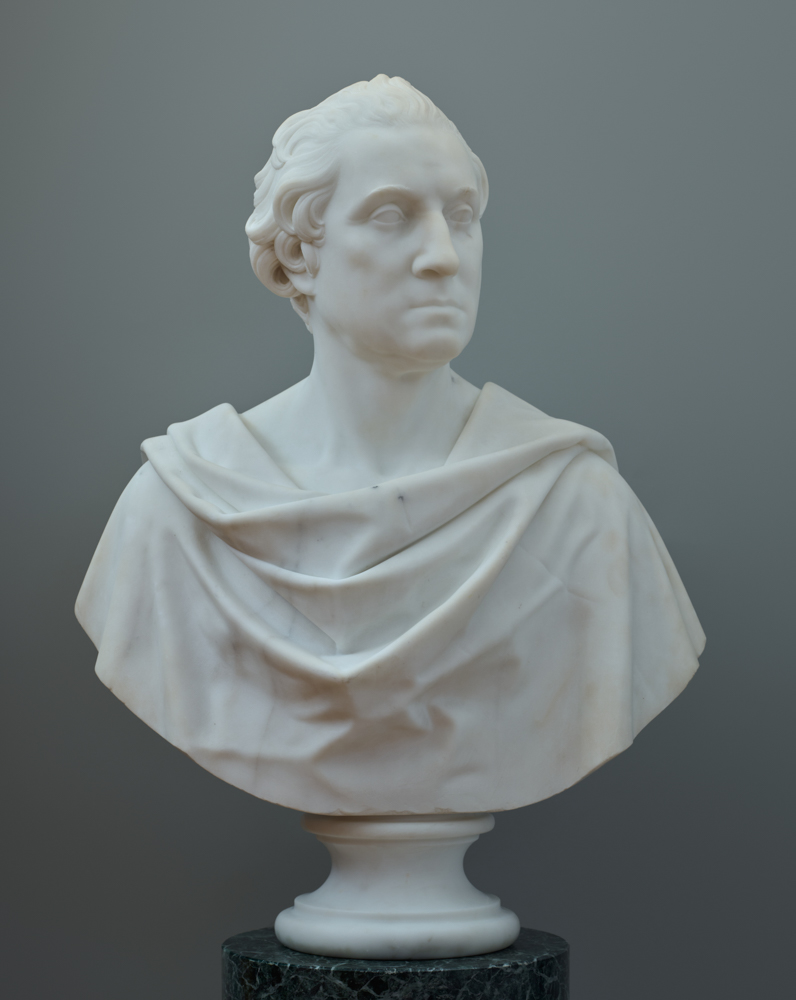
Horatio Greenough, Bust of George Washington, ca. 1828–1834, marble. McGuigan Collection, 0000.2022.6.2.
View object recordMore recognizable today are the several busts of Washington sculpted by American Horatio Greenough (1805–1852) for prominent Americans before the artist received a lifechanging commission from the United States Congress in 1832 to create a monumental sculpture of the first president. Among his best is a bust which depicts George Washington in the guise of a proud Roman senator draped in a toga. Greenough’s depiction of Washington was influenced by several contemporary portraits of the president that he encountered during a stay in Boston from 1826–1828, including a plaster bust of Antoine Houdon’s (1741–1828) life portrait of Washington, then at the Boston Athenaeum. Greenough would later identify this Houdon bust as his preferred authority for Washington’s features. Greenough was also influenced by the ancient sculptures, classicizing art, and antiquarian culture that he partook in as a resident of Rome and later Florence, where he studied with the Italian sculptor Lorenzo Bartolini (1777–1850), whose neoclassical style and influence can be detected in this and other Greenough sculptures.
American artists of the period also began to be more creative and experimental in their adaptations of ancient models. Greenough’s monumental sculpture depicting Washington as Zeus is an excellent example of the innovative spirit that overtook American artists of the era. Commissioned on the centennial of Washington’s birth, the sculpture would be the first national monument to Washington, intended for display in the rotunda of the Capitol building. In a manner fitting for Washington’s hallowed status as the foremost figure of the American pantheon, Greenough opted for the most radical depiction of Washington yet: in the guise of a seated and enthroned Zeus, king of the Olympian gods of ancient Greece. Greenough based his portrait on descriptions of the statue of Zeus at Olympia, a lost ancient sculpture by the fifth-century BCE Greek sculptor Phidias and one of the Seven Wonders of the Ancient World. Greenough’s monumental statue became one of the most famous and most controversial representations of America’s revolutionary war hero and first president. His choice to deify Washington as a modern Zeus and depict him semi-nude shocked many of his contemporaries, and the statue was heavily criticized.
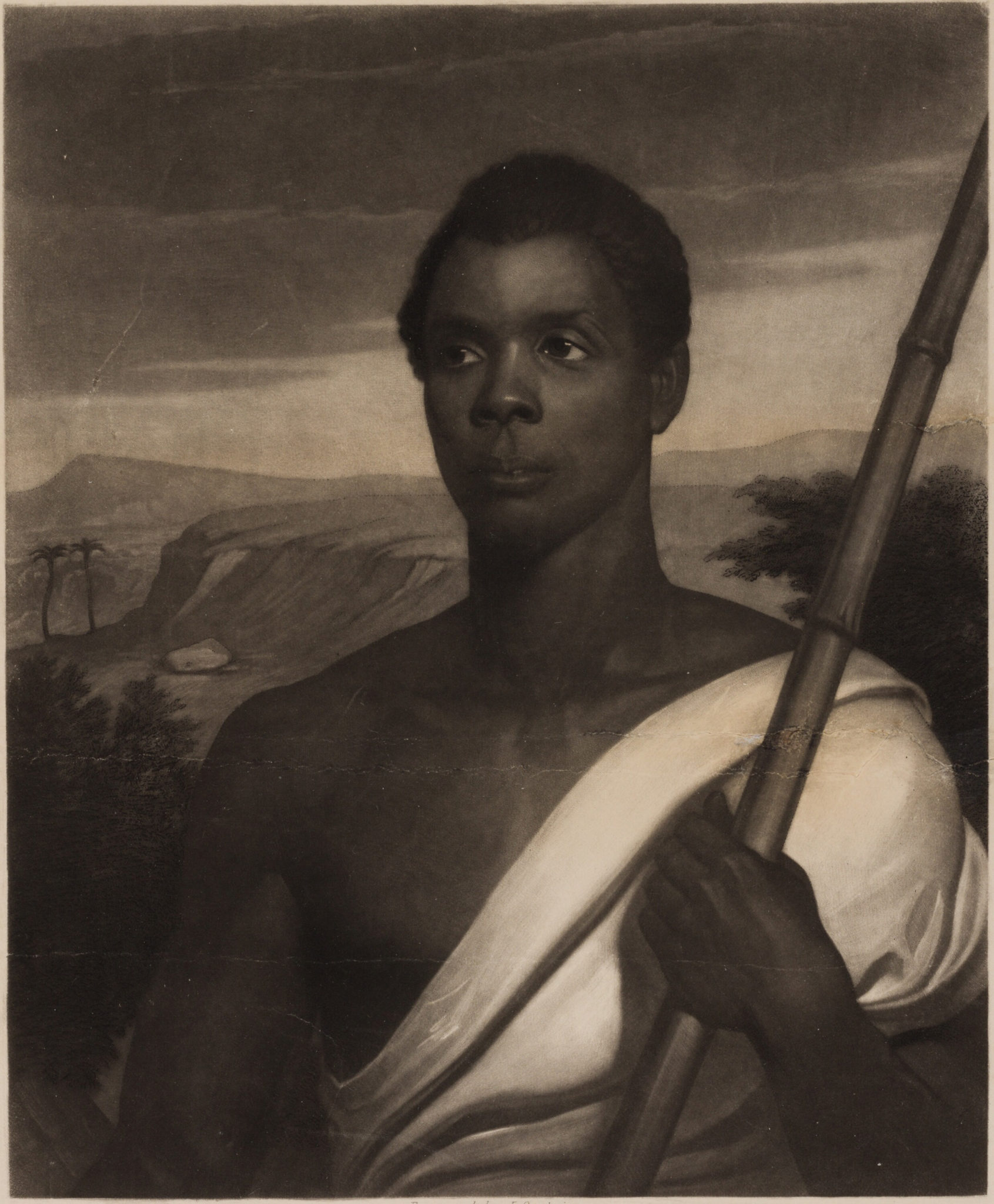
John Sartain (after Nathaniel Jocelyn, 1796-1881), Cinque, Chief of the Amistad Captives, 1840, mezzotint print. Bowdoin College Museum of Art Purchase, Lloyd O. and Marjorie Strong Coulter Fund, 2021.15.
View object recordSimilarly creative and equally politically charged is a portrait of Sengbeh Pieh, leader of the Amistad mutiny, that was painted by Philadelphian painter Nathaniel Jocelyn (1796–1881). In 1839, Sengbeh Pieh, a West African man of the Mende peoples, was kidnapped in Sierra Leon, brought to Cuba, and sold to Spanish slave traders. Pieh, known in the press at the time as Joseph Cinqué, led a mutiny of fellow Mende captives aboard the slave ship La Amistad. Under the control of Pieh and his fellow captives, the ship was boarded in New York, and the West Africans were arrested for mutiny and murder. The case of the Amistad captives took several years to wind its way to the Supreme Court, during which time the plight of Pieh and his fellow men became a flash point in abolitionist debates. In 1841, the Supreme Court ruled that the Mende captives were justified in mutinying to regain their freedom, having been kidnapped in violation of international law.
In 1840, as public debate over the plight of the West Africans raged, Robert Purvis, a wealthy Black Philadelphian and prominent abolitionist, commissioned the American painter Nathaniel Jocelyn to create a portrait of Pieh. The dignified portrait that Jocelyn created referenced Pieh’s West African origins in the landscape and staff. The white cloak draped over Pieh’s left shoulder however, would have been read by contemporaries as a reference to classical heroes, and particularly to values of Roman civic virtue and Republican freedom, in keeping with classicizing conventions popular in American portraiture for generations. Purvis also ordered an engraving to be prepared for the popular press by the John Sartain, a British artist based in Philadelphia.
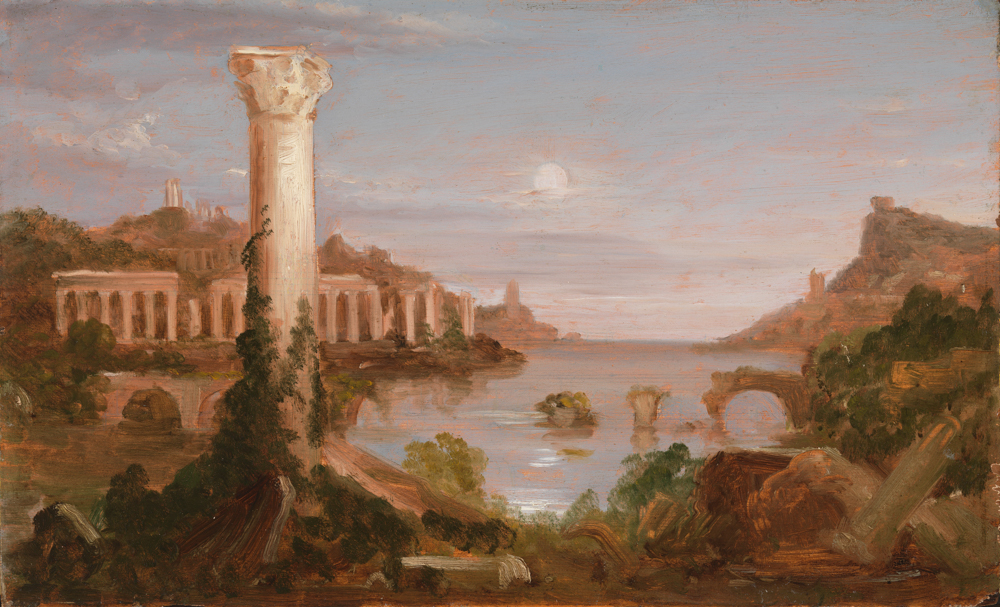
Thomas Cole, Study for Desolation, from The Course of Empire, ca. 1833–1836, oil on canvas. McGuigan Collection, 0000.2022.6.19.
View object recordAmerican artists engaged the ancient Mediterranean past as a way of commenting on the present. This is exemplified in the work of Thomas Cole (1801–1848), America’s preeminent landscape painter of the early nineteenth century and founder of the Hudson River School, who was deeply influenced by his travels in Europe between 1829 and 1832. There, Cole explored the ancient ruins of the continent and encountered antiquarian culture at its height. The Course of Empire cycle (1834–1836), painted shortly after the artist’s return to the United States, is best understood in light of these travels and the classicizing art and culture Cole encountered in Italy and England, to which the cycle stylistically responds. His experiences of European society also inspired the artist to reflect on American progress and the destiny of the United States.
Thomas Cole’s grand Empire cycle is five-painting allegorical treatment of the rise and fall of civilization, from “The Savage State” featured in the first painting in the cycle, to the “Desolation” and return to nature featured in the final painting. The civilization depicted is closely modeled on the trajectory of Rome, from its agrarian and Republican roots captured in “The Pastoral or Arcadian State” to its imperial grandeur and wealth depicted in “The Consummation of Empire” and finally to its fall and present decay. Painted at a time when America was expanding, geographically and on the international scene, Cole’s paintings have long been understood to hold up the earlier agrarian ideal of America in the face of contemporary developments and Jacksonian democracy.
Clues to Cole’s own intentions for the cycle can be found in his writings and lectures of the period, which comment on the industrialization of Europe and the encroachment of modernity on the “sublimity of wilderness,” warning of the need to preserve America’s natural splendor, a popular subject of Romantic artists and authors of the period. In Cole’s cyclical (and pessimistic) understanding of history, the luxury and extreme wealth depicted in “Consummation” ended, inevitably, in the corruption and decline captured in “Destruction” and “Desolation.” This final painting of the series, “Desolation” depicts a romanticized version of the ancient Roman ruins that had become increasingly familiar to Americans.

Like Thomas Cole’s Course of Empire, the classicizing statue The Greek Slave, by Vermont-born sculptor Hiram Powers (1805–1873), is another prime example of the creative way American used the ancient past to comment on the present. Powers completed modeling The Greek Slave in 1843, which was conceived by the sculptor as a Greek captive on sale at an Ottoman slave market. The nude figure—a sensational subject matter as the first life-size nude figure to be exhibited in America—leans against a support in contrapposto, with her wrists shackled and chained in front of her. The statue, which looks at first glance much like high classical Greek sculpture, is brought into the present and “Christianized” by the presence of a cross and locket—symbols of Christian faith and fidelity—on which the right hand rests atop the support. The Greek Slave most immediately referred to the Greek War of Independence from the Ottoman Empire (1821–1832), thus joining a growing artistic tradition of Orientalism in passing judgement on Ottoman “East.”
In The Greek Slave, however, abolitionists found a powerful symbol for their crusade against the continued suffering caused by slavery in America. The statue met with rapid and widespread acclaim; it was part of a popular touring exhibition across major US cities well into the 1850s and was installed as the central focus in the US pavilion at the Crystal Palace in London in 1851. Six full-scale marble copies of the model were made, as well as numerous copies at reduced scale and in bust form. So high was the demand for the sculpture that several porcelain manufacturers in England and America made copies in Parian ware. These would have been a popular home furnishing and were displayed by abolitionists like Frederick Douglass in their homes.
Sculpted in high neoclassical style and relying on “European” features, the statue upholds the Greeks as a moral (and aesthetic) exemplar, especially contrasted against her imagined Turkish captors. The restrained classical archetype is positioned in a pose evocative of and based on the Venus de Medici, one of the most famous Greek Hellenistic marbles in Italy, on view in the Uffizi in Florence where Powers’s studio was based. Elements of surprise, vulnerability, and modesty indicate points of overlap in the narrative surrounding both sculptures. The facial features and hair are a composite of styles undoubtedly drawn from Powers’s study of Attic and Hellenistic Greek marble sculpture and plaster casts on view in Florentine galleries. European beauty ideals founded in Greek classicism are revealed in her white marble flesh, exposed and vulnerable. Conversely one must question how this evocation of whiteness became one of the most prominent and powerful symbols affective in arguments against chattel slavery.
Upholding an image of White, neoclassical beauty as a metaphor for African slavery created controversy. Some observed the hypocrisy in those who identified with the Greek slave and the Greek independence movement while ignoring the plight of enslaved peoples in America. In 1851, the popular London weekly Punch ran a cartoon recasting Powers’s model as an enslaved Black American chained to a post with an American flag and with chains and whips decorating the plinth. In a poem that accompanied the cartoon, the enslaved Black woman draws attention to the great difference between her plight and that of the Greek slave idealized in Powers’s sculpture. Though the cartoon and poem draw on racist stereotypes of the period, the effect was powerful, and the comparison was not lost on many.
George Stillman Hillard et al., Six Months in Italy. By George Stillman Hillard. In Two Volumes (London: John Murray, Albemarle Street, 1853), 178.
William L. Vance, "America’s Rome," in America's Rome : Artists in the Eternal City, 1800-1900, ed. P.S. D’Ambrosio (Cooperstown, NY: 2009), 15.
Stephen L. Dyson, Ancient Marbles to American Shores: Classical Archaeology in the United States (1998), 125.
For a timeline of these and other early arrivals, see Cornelius Clarkson Vermeule and Pierre Gusman, Roman Decorative Art (Boston, Mass: Dept. of Classical Art, Museum of Fine Arts, 1981).
As quoted in Margaret Malamud, African Americans and the Classics Antiquity, Abolition and Activism (2019), 156.
Nathaniel Hawthorne et al., The Marble Faun : Or, the Romance of Monte Beni (1860).
William Sunlap, History of the Rise and Progress of the Arts of Design in the United States (New York: G.P. Scott and Co., 1834).
Richard H. Greenough Saunders, Horatio Greenough : An American Sculptor's Drawings (Hanover, N.H.; Wantage: University Press of New England ; University Presses Marketing, 1999), 92.
See Earl A. Powell, Thomas Cole (New York: Harry N. Abramas, 1990), 62-72.
Richard P. Wunder, "Hiram Power: Vermon Sculptor, 1805-1873," in The American Arts Series (Cranbury, NJ: Associated University Presses, 1991), 209.
See Malamud, African Americans and the Classics Antiquity, Abolition and Activism, 86-88.


